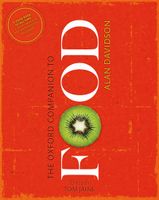Advertisement
Neuroanatomy of Food Flavour
Published 2014
flavour is an enigmatic combination of sensations and perceptions—smell, taste, touch, temperature, ‘mouthfeel’. Understanding how these factors interact to produce flavour is a scientific challenge. Olfaction (smell) contributes approximately 80 per cent of food flavour and its receptors (the olfactory receptors) are enmeshed in a gloop of mucosa inside and at the top of the ‘nose’, just behind and above the bridge. Uniquely, it is the only sense with receptors directly exposed to the environment. These receptors dispatch signals to structures called the olfactory bulbs which look like very small deflated balloons and are located under the front of the brain above the eye sockets on a pitted flat of bone called the cribiform plate. Because of this positioning, the bulbs have also been likened to ‘two wet match sticks on a cheese grater’. They are responsible for the first analysis of olfactory information; this is where olfactory sensation elides into perception.


